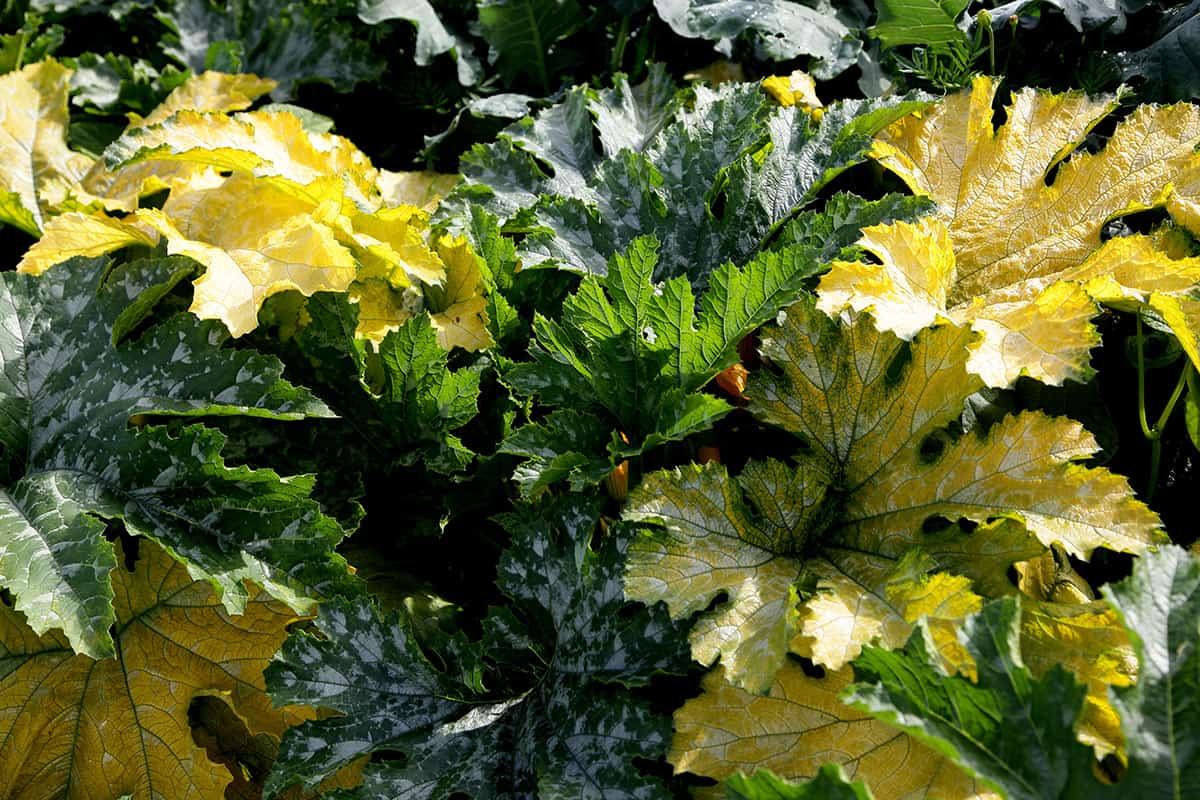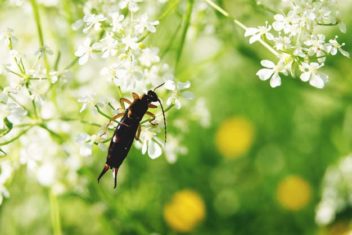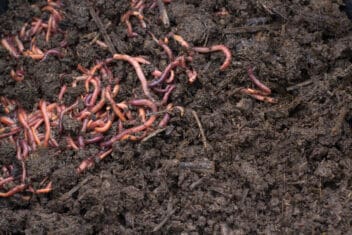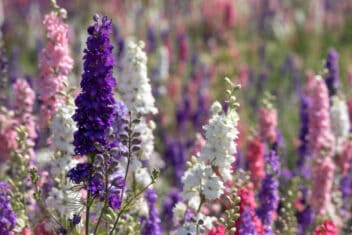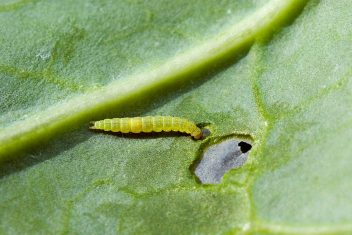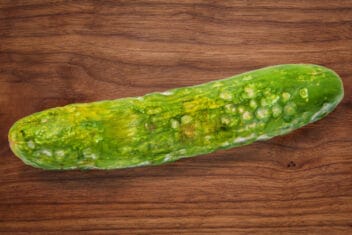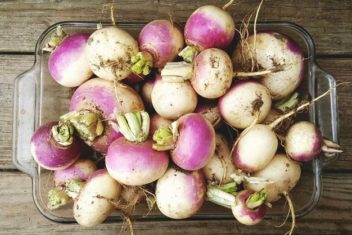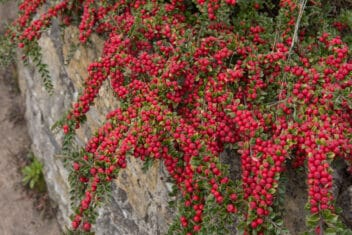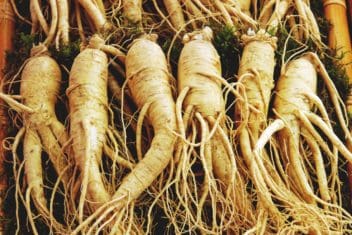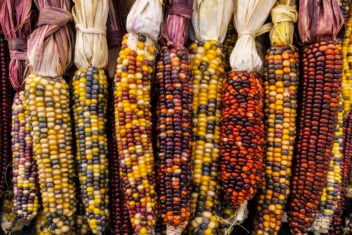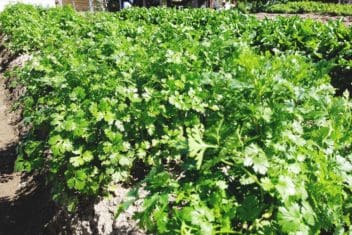At some point, as your cucumbers and squash grow, you might find the leaves turning yellow and dying. It’s a common situation that obviously indicates something is wrong with your plants.
But, what’s the problem?
First: DON’T panic! It happens to every gardener from time to time. Next, you have to sleuth out what’s wrong using a process of elimination.
That’s what we’re going to do together. Ready?
The Reasons Your Cucurbits Turn Yellow

There are many reasons why your cucurbit leaves are turning yellow. Some of the reasons are similar to why pepper plants or any other veggies turn yellow. But there are some different reasons, as well.
That’s why it’s always important to individually diagnose your different plants. Each type has different needs – so let’s take a look.
1. Watering Problems
The most common reason why your cucumber leaves turn yellow is that you have a watering problem. That means you’re either giving your plant too much or too little water.
Everyone worries that they don’t give enough water to their plants. But do you worry about giving too much water? Over-watering can be hugely problematic for plants. Many plants die if their roots are soggy and in standing water.
How Do You Know If You’re Over-watering?
I suggest that you have a rain gauge in your garden. It’s a simple tool that measures how much rain you receive each week. Most plants need between 1-2 inches of water per week.
That gives you a basis on how much you need to water by hand or with your irrigation system.
Another tool you can grab is a soil meter. These handy little tools measure the amount of moisture in your soil, preventing you from over or under-watering.
My favorite suggestion is to put your finger into the soil and see if its dry two inches down. If it’s dry, then it’s time to water. If the soil is moist two inches down, then check the following day.
2. A Nutrient Deficiency
One of the top reasons for cucumber and zucchini leaves turning yellow is a nutrient deficiency. Plants require an array of nutrients, which makes it tricky to figure out if it’s the root cause of your plant.
The only way that you can be certain – without a doubt – about the nutrients in your soil is to have it tested. You can do that either by purchasing a soil testing kit online or a garden center and complete the test at home.
Or, you can ask your local extension office if they offer soil testing services. Those results will be completed by professionals and might be much more comprehensive, but you’ll need to wait for weeks to receive them, so plan ahead.
Nitrogen Deficiency
The most common nutrient deficiency that causes cucumber and zucchini leaves to turn yellow is nitrogen. Typically, if you added plenty of compost at the start of the growing season, you can prevent this problem.
A nitrogen deficiency will turn the foliage yellow as well as stunt the growth of the entire plant. A severe deficiency leads to the death of the plant.
How do you know if you have a nitrogen deficiency?
- The older leaves turn yellow first along their central veins and the tips.
- The newer leaves stay green.
You can buy a nitrogen fertilizer, but always be sure to read the packaging to find the right dilution ratio. Nitrogen can burn plants if you add too high of a dose.
Potassium Deficiency
Most potassium deficiencies happen due to an excess in calcium, sodium, or nitrogen. It’s vital that you feed your plants at the right stage of growth to help the plants grow properly. When your plants reach the flowering stage, the need for potassium is at its highest.
Cucurbit plants need a lot of potassium. They’re actually some of the few veggie crops that need more potassium than nitrogen.
A few signs of a potassium deficiency include:
- The leaves turn yellow at their tips and edges, eventually turning entirely yellow.
- The new leaves are smaller with a dull look, along with being cupped.
- You’ll find that the fruit has a club shape.
Iron Deficiency
Your zucchini plants could have an iron deficiency that causes the leaves to turn yellow, but it’s not as common. Iron deficiencies are characterized by new leaves turning yellow with green veins as the older leaves stay green.
When it comes to iron problems, you can either treat the plant or the soil – doing both is fine, but you always want to stay balanced.
You can use a liquid iron that you spray on the foliage, but this solution doesn’t last as long. If you want to treat the soil, you can use a powdered iron sprinkled around the root zone.
3. Lack of Sunlight
Did you know that cucurbit plants need and love as much sunlight as they can get?
Cucumbers and zukes are sunlight lovers, so if your plants don’t receive, at least 6-8 hours of sunlight, chances are the leaves will start turning yellow.
How can you know if sunlight is the issue? Even if you provide enough water or nutrients, the plants stay yellow.
4. Pests Bothering Your Plants
Unfortunately, all gardeners will encounter pests from time to time. If your foliage is turning yellow, make sure that you take a close look at your plants to see if you can find pests on them.
Here are some of the common pests that feed on cucumber and zucchini plants and leaves, causing them to turn yellow.
- Aphids: These pests are tiny insects that stick to the underside of the leaves. They suck out the sap from the leaves, leaving a sticky substance behind that can lead to mold or an ant infestation.
- Spider Mites: They love to suck on the cucumber leaves, which causes yellow stippling. You typically find spider mites on the underside of the leaves. A sign of spider mites is a silvery, fine webbing left behind.
- Leafhoppers: These are bigger than aphids and mites, but they also love to suck on your plant. Leafhoppers inject a toxin in your plant as it feeds, causing the yellowing. Eventually, the damage becomes so bad that the leaves fall from the plant.
- Whiteflies: If you move your plant and encounter a bunch of small, white-winged insects, you more than likely have whiteflies. These pests also suck on your plant, leaving behind a sticky substance called honeydew on your plants.
Most pests can be treated with insecticidal soaps or organic methods if you catch the infestation early. At times, simply removing the bottom leaves is enough to stop the pests from damaging your plants.
5. Diseases Are Damaging Your Plant
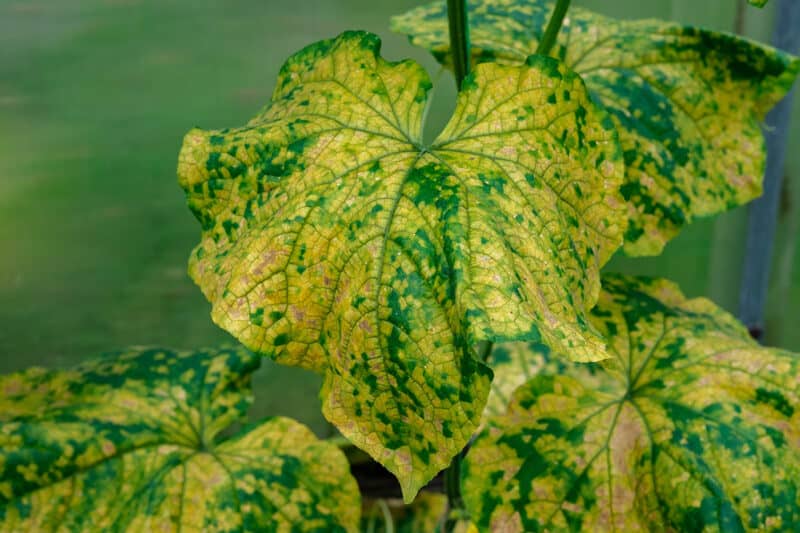
Unfortunately, treating and handling diseases can be more troublesome than pests when it comes to cucurbit plants. Zucchini and cucumber are quite vulnerable to a variety of diseases, and several of those can make leaves start turning yellow and dry up.
Three of the most common diseases that infect cucumber plants are:
- Cucumber Mosaic Virus: This disease is characterized by wrinkled, dried leaves with yellow spots. It’s most often spread by aphids and leafhoppers, but it can live in the soil and infect new plants the following year.
- Fusarium Wilt: For this disease, take a look at the older leaves. Are they turning yellow first, starting at the edges and moving towards the middle of the leaves? If so, fusarium wilt could be the problem. It’s often spread by the cucumber beetle larvae as it feeds on the roots of your plants.
- Downy Mildew: You’ll know that your plants have downy mildew if you find yellow spots on the upper surface of the leaves which later turn to brown. It will look like patchwork.
These diseases can be spread by pests or found in the soil from a previous plant that you grew in that spot.
Unfortunately, if your plant is infected with the first two, you won’t be able to treat them. Instead, you have to remove the infected plants to stop the spreading of the diseases.
What Can You Do If Diseases Are a Bothering Your Plants
The first thing you should do is try to diagnose which diseases are infecting your plants. Look for key characteristics. Some questions to consider:
- Are your leaves yellowing and drying?
- Do you see any spots on your leaves?
- Are the edges of the plants curling?
- Which leaves are yellow – just the bottom or the entire plant?
After you diagnose your problem, create an appropriate treatment plan. No matter what disease you have, improving the air circulation of your plant is vital. You should also clean out the debris around your plant to remove places that diseases can harbor.
What to Do Next?
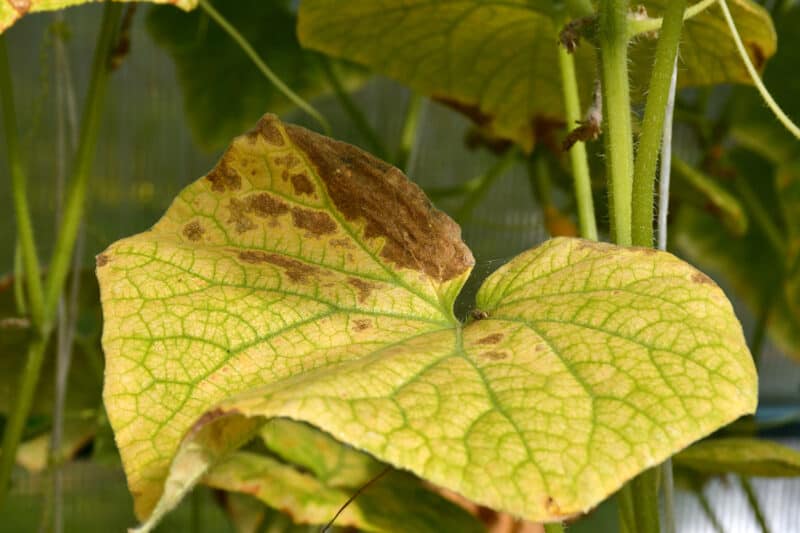
It’s important to remember that once you solve the problem, the leaves on your plant won’t turn back to green. Once leaves turn to yellow, they’ll stay yellow, so don’t assume that you didn’t fix the issue. You more than likely did!
Depending on what was plaguing your plant, it will likely continue to grow and thrive, and you may even still get fruits. Trim off the yellow leaves, since they aren’t contributing to the health of your plant.
No one wants to see their cucumber or zucchini leaves turning yellow, but it’s far from uncommon. Most gardeners will encounter this situation, but as long as you work to fix it, your plant should be able to survive.
